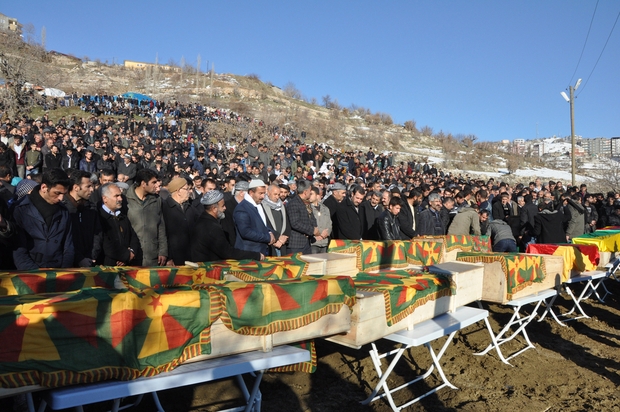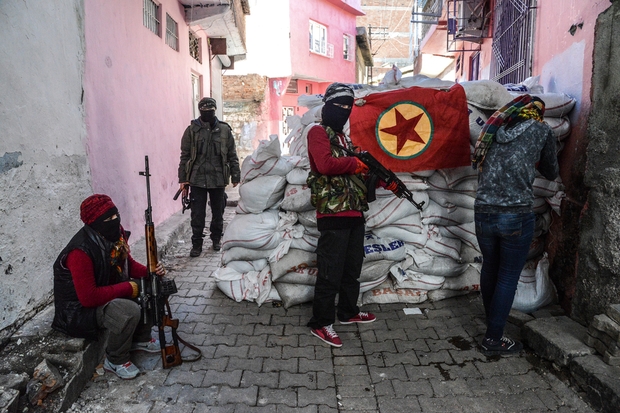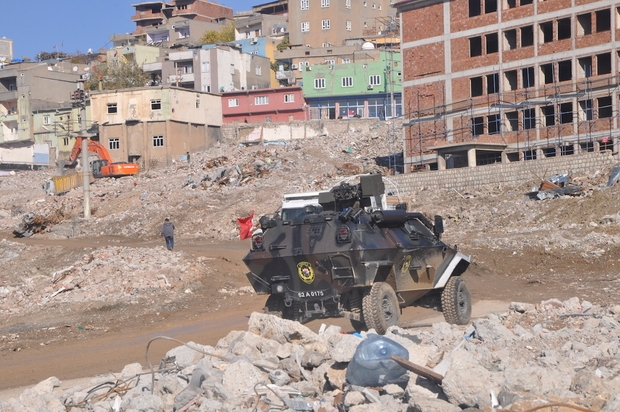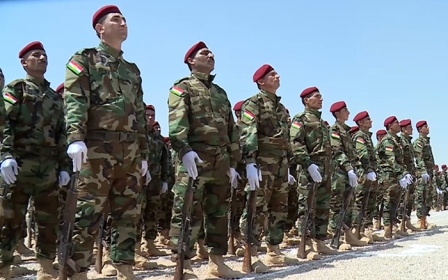Turkey's own refugees: Now Kurds turn to Europe for help

While European leaders woo and praise Turkey’s President Recep Tayyip Erdogan for generously hosting hundreds of thousands of Syrian refugees, none of them mentions a discordant fact: more than 400,000 of his Kurdish fellow-citizens, who were displaced by the war in south-east Turkey last year, have received no government aid and still cannot return home, according to aid groups.
The irony, if not hypocrisy, is all too clear to Huseyin Durmaz, a leading official in the Sarmasik Association, a Kurdish aid group in Diyarbakir, which is struggling to use private donations from ordinary people to help the homeless in the absence of funding from Ankara.
Whole communities lost their houses, and an estimated 1,600 people lost their lives during nine months of clashes which erupted after the collapse of the ceasefire between the government and the Kurdish Workers’ Party (PKK) in July 2015.
The PKK is believed to have killed 337 soldiers, 182 police and 13 village guards at the height of the conflict between June 2015 and June 2016, according to local Turkish media. Overall, the death toll now stands at more than 2,500, according to some observers.
Abdullah Ocalan, the imprisoned PKK leader, called on the militants to stop as their actions went against his repeated stance, ever since he was arrested, of calling for ceasefires.
Ocalan considered the trench-digging a highly risky provocation - but despite a short lull after his views were published, the trench-digging resumed after Turkish troops moved in with overwhelming force to regain control. The tactic was supported by PKK leaders in the field.
'Should people act like lambs to the slaughter in the face of all pressures?'
- Selahattin Demirtas, HDP leader
The violence put Selahattin Demirtas, the leader of the People’s Democratic Party (HDP), in a dilemma. Condemned by Erdogan for not distancing himself and his party from the PKK, Demirtas felt he could not criticise the rebels. In December 2015 he asked Turks to understand why the Kurds were making barricades.
“The thing that you despise by saying ‘ditch’ and ‘barricade’ is actually a resistance against the coup," Demirtas said. "Should people act like lambs to the slaughter in the face of all pressures?… The autonomy is against dictatorship.”
The government declared curfews which prevented people from leaving their homes for days. Some 58 curfews were imposed at various times in 19 towns and districts, according to Amnesty International. Artillery and tank fire destroyed houses and killed scores of people.
Urban war between Ankara, PKK
Just over a year since the end of the sieges, the scars are still visible.
The destruction was on a much heavier scale than during the war between the PKK and the army during the 1980s and 1990s, residents say. That earlier conflict took place mainly in the region’s villages.
“We had nine months of conflict from July 2015 and I was there throughout,” she told MEE. “I took part in about 600 funerals. The Turkish army used howitzers and heavy weapons. The insurgents only had automatic rifles. Bodies remained in the street for weeks.”
'I took part in about 600 funerals. The Turkish army used howitzers and heavy weapons. The insurgents only had automatic rifles'
- Leyla Birlik, Sirnak MP
The body of her brother-in-law, Haci Lokman Birlik, was shown on a police video clip being dragged along the street by an armoured personnel carrier. The prime minister, Ahmet Davutoglu, ordered an investigation but it was later reported that the inquiry was not into the atrocity but into how the police video was leaked.
Birlik’s husband, an HDP activist, was jailed for 12 months. She is on remand, charged with terrorist offences, and is facing sentences totalling 37 years.
“Our 16-year-old son used to be angry with us for always being involved in politics. But when he saw his uncle’s body in the police video, he felt guilty that he wasn’t doing more to support the struggle.”
What's happening to Sur?
The war has ended but the destruction of Kurdish cities is still an ongoing process – only this time by means of bulldozers.
Sur, the old city of Diyarbakir, is a UNESCO heritage site because of among other features, its six kilometres of well-preserved 11th-century walls with four gates and 72 towers.
Six districts, about a third of the city, are now closed off by 10-foot-tall concrete blocks placed across the narrow alleys which lead into them. Only the top of the pre-Ottoman 16th-century square minaret, set on four basalt pillars and known as the four-legged minaret, is visible.
Government officials say the clearing is needed for safety reasons because too many houses are ruined or booby-trapped. Critics say it is social engineering, aimed at putting in wide streets and high-rise flats similar to those in the modern part of Diyarbakir. They are easier to patrol or isolate in order to prevent urban guerrillas from taking over.
Survivors have mixed feelings about the uprising, according to a foreign resident of Turkey who travels frequently in the south-east of the country. They asked to remain anonymous as they feared they would be blocked from travelling in the region; also they were wary about reporting dissent within activist ranks.
Kurds blame the government for the destruction, the resident said, but blame the PKK for provoking it by supporting the building of barricades and foolishly launching an unequal battle with a well-armed, powerful NATO army.
An appeal to Europe
The task of helping the displaced was made harder two months ago when the two main local Kurdish aid organisations, Rojava Aid and the Sarmasik Association, were closed down by government decree amid the state of emergency imposed after last summer’s failed coup attempt.
Rojava Aid explains it was set up in 2014 after 200,000 people - including Turkomen, Armenians and Arabs as well as Kurds - fled the Syrian city of Kobane when it came under attack from the Islamic State group. Almost all have now returned to Kobane or moved elsewhere. Rojava Aid switched focus to help the new wave of displaced people inside south-east Turkey.
'We had a big problem in Sirnak because the curfew lasted very long after the warfare ended'
- Mustafa Ocaklik, Rojava Aid
“We had a big problem in Sirnak because the curfew lasted very long after the warfare ended,” Mustafa Ocaklik of Rojava Aid told MEE.
“There was a severe need for food but the security forces often stopped our vehicles and took the aid. Dozens of volunteers were arrested. Twenty thousand people in Sirnak were re-housed in tents.
"The police and army burnt them down in November last year and told people to go elsewhere. We had plans to build 500 flats in Sirnak but our launch ceremony was blocked by the [Ankara-appointed] governor.”
The Sarmasik Association looks after 32,000 displaced people in Diyarbakir. They are living with relatives or rented flats. “These 5,000 families need food aid as they are at risk of hunger. Some came from the villages. Others are from here,” said Huseyin Durmaz, an official for the association.
“The Turkish government is oppressing Kurdish NGOs," added Ocaklik. "They want Kurds to become docile and tame."
New MEE newsletter: Jerusalem Dispatch
Sign up to get the latest insights and analysis on Israel-Palestine, alongside Turkey Unpacked and other MEE newsletters
Middle East Eye delivers independent and unrivalled coverage and analysis of the Middle East, North Africa and beyond. To learn more about republishing this content and the associated fees, please fill out this form. More about MEE can be found here.








